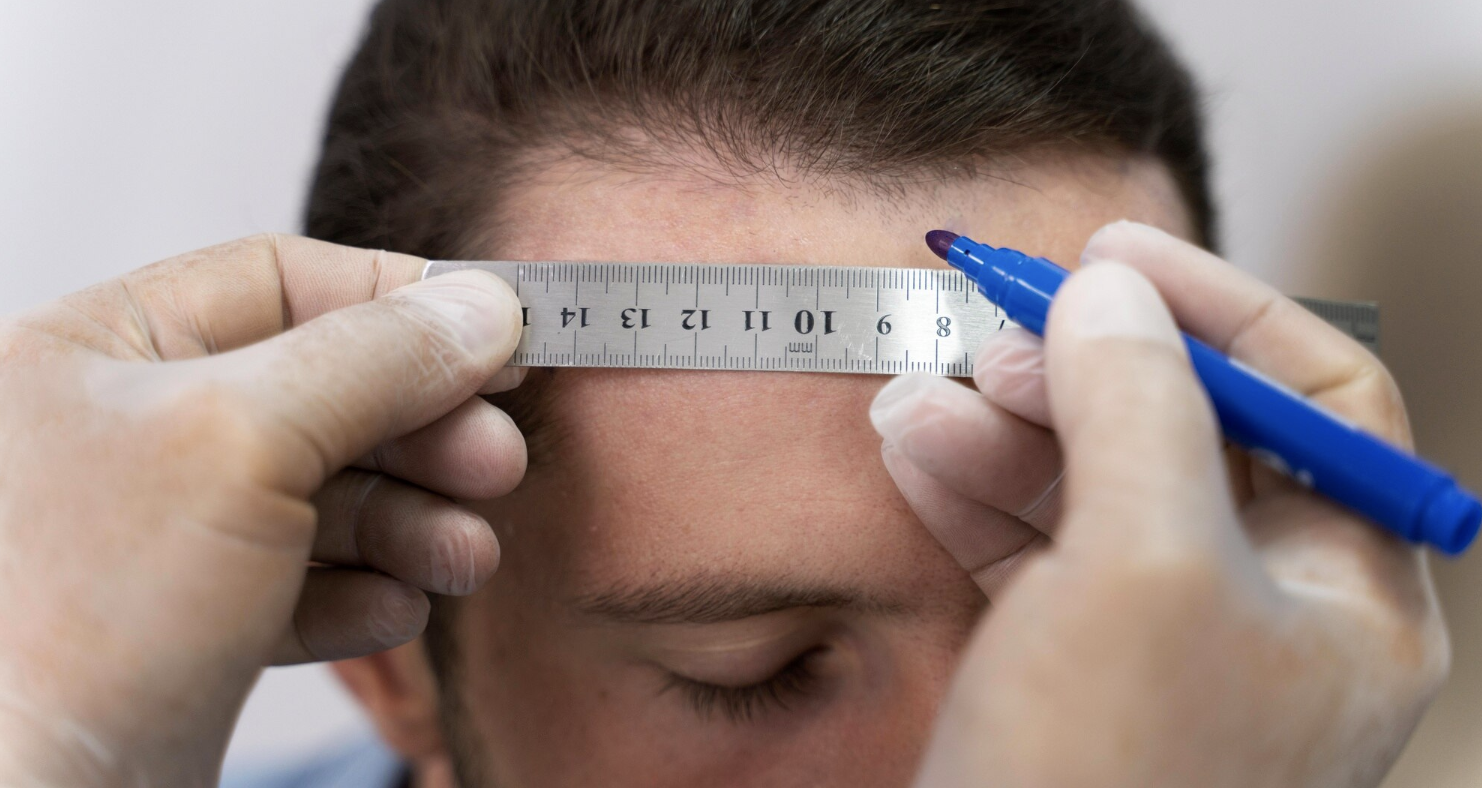
Hair Transplant Repair: A Comprehensive Guide to Fixing Failed Hair Transplants
Hair transplant surgery is a widely sought-after solution for hair loss, offering the potential to restore a full and natural-looking head of hair. However, not all hair transplants go as planned. Whether due to outdated techniques, inexperienced surgeons, or individual complications, some patients find themselves dissatisfied with the results. This is where hair transplant repair comes into play. In this article, we’ll explore everything you need to know about hair transplant repair, including when it’s needed, what options are available, and how to choose the right specialist to correct your previous procedure.
What is Hair Transplant Repair?
Hair transplant repair refers to a secondary procedure aimed at correcting or improving the results of a previous hair transplant. This may involve addressing issues such as unnatural hairline design, scarring, poor graft survival, or an unsatisfactory density of transplanted hair. The goal is to enhance the overall appearance, creating a more natural and aesthetically pleasing outcome.
Why Might You Need Hair Transplant Repair?
Several factors can contribute to the need for hair transplant repair:
- Outdated Techniques: Older hair transplant methods, such as “plug” or “mini-graft” techniques, often result in unnatural, “doll-like” hairlines or visible scars. Modern techniques like Follicular Unit Extraction (FUE) and Follicular Unit Transplantation (FUT) offer more refined and natural-looking results.
- Inexperienced Surgeon: A lack of experience or skill on the part of the surgeon can lead to poor graft placement, unnatural hairline design, or uneven hair distribution. In some cases, the surgeon may not have taken the patient’s unique hair characteristics or facial structure into account, resulting in an unsatisfactory appearance.
- Poor Graft Survival: If the transplanted hair follicles do not survive or grow as expected, the results may be patchy, sparse, or uneven. This can occur due to improper handling of the grafts, poor post-operative care, or individual factors like poor blood supply to the scalp.
- Scarring: Visible scarring from the donor or recipient area is a common issue with older hair transplant methods. In some cases, the scars can be so prominent that they overshadow the benefits of the transplant itself.
- Overharvesting: Overharvesting of donor hair can lead to an unnatural appearance, especially if the remaining donor area looks noticeably thinned out or scarred.
- Unnatural Hairline: The hairline is one of the most critical aspects of a successful hair transplant. If the hairline is placed too low, too high, or in an unnatural pattern, it can detract from the overall results, making the transplant look obvious.
Hair Transplant Repair Techniques
The approach to hair transplant repair depends on the specific issues that need to be addressed. Some of the most common techniques include:
- Graft Removal and Redistribution: In cases where the previous grafts were placed in an unnatural pattern, they can be carefully removed and redistributed to create a more natural look. This technique is particularly useful for correcting unnatural hairlines or overly dense “plug” grafts.
- Scalp Micropigmentation (SMP): SMP is a non-surgical option that involves tattooing tiny dots on the scalp to create the illusion of hair follicles. This technique is often used to camouflage scars or create the appearance of greater density in areas where grafts have failed.
- Scar Revision: If scarring is a significant concern, scar revision techniques can be employed to minimize their appearance. This may involve surgical removal of the scar tissue, laser treatments, or using FUE to transplant hair into the scarred area.
- Adding Density: If the original transplant did not achieve the desired density, additional grafts can be transplanted to thicken the hair in specific areas. This technique is often used in combination with other repair methods to enhance the overall results.
- Hairline Refinement: For patients with an unnatural hairline, repair surgery can involve carefully redesigning and refining the hairline to create a more aesthetically pleasing and natural look. This may include lowering or raising the hairline, softening the edges, or adding finer hairs to blend with the existing hair.
- Correcting Overharvesting: If the donor area has been overharvested, it may be possible to use body hair (from the chest, back, or beard) to fill in the gaps. This technique, known as body hair transplant (BHT), can help restore a more balanced appearance.
Choosing the Right Surgeon for Hair Transplant Repair
Selecting the right surgeon is crucial for a successful hair transplant repair. Consider the following factors when choosing a specialist:
- Experience: Look for a surgeon with extensive experience in hair transplant repair, as this is a more complex and delicate procedure than a primary transplant.
- Reputation: Research the surgeon’s reputation through patient reviews, before-and-after photos, and testimonials. A reputable surgeon will have a track record of successful repairs and satisfied patients.
- Consultation: During the consultation, the surgeon should take the time to understand your concerns, evaluate the previous transplant, and explain the available repair options. They should also provide realistic expectations about what can be achieved.
- Certification: Choose a board-certified hair restoration specialist who is recognized by reputable organizations in the field. This certification ensures that the surgeon has met the highest standards of training and expertise.
Recovery and Results
Recovery from hair transplant repair surgery is similar to that of a primary transplant, but it may vary depending on the specific techniques used. Patients can typically expect the following:
- Initial Healing: Redness, swelling, and mild discomfort are common in the days following the procedure. These symptoms usually subside within a week.
- Hair Growth: As with a primary transplant, the newly transplanted hair will initially shed before entering the growth phase. It may take several months to see significant growth, with full results visible after 12-18 months.
- Follow-Up: Regular follow-up appointments with your surgeon are essential to monitor the progress and address any concerns that may arise during the healing process.
FAQs about Hair Transplant Repair
1. How soon can I undergo a hair transplant repair after my initial transplant?
It is generally recommended to wait at least 12 months after your initial transplant before undergoing a repair procedure. This allows time for the transplanted hair to grow and the scalp to heal fully.
2. Can all hair transplants be repaired?
Most failed hair transplants can be improved or corrected with repair surgery. However, the extent of the repair will depend on factors such as the availability of donor hair and the severity of the issues.
3. Is hair transplant repair more expensive than a primary transplant?
Repair surgery can be more expensive due to the complexity of the procedure and the need for specialized techniques. The cost will vary based on the surgeon’s expertise and the extent of the repair required.
4. Will the results of the repair look natural?
When performed by an experienced surgeon, hair transplant repair can produce natural-looking results. The key is to choose a specialist with a proven track record in repair procedures.
5. How can I avoid needing a hair transplant repair in the future?
To minimize the risk of needing a repair, it’s essential to choose a skilled and experienced surgeon for your initial transplant. Do thorough research, ask for before-and-after photos, and ensure that the surgeon understands your aesthetic goals.
6. Can I undergo repair surgery if I have limited donor hair?
If scalp donor hair is limited, alternative options such as body hair transplant (BHT) may be available. Your surgeon can assess your donor areas and recommend the best approach.
7. How long does it take to see the results of a hair transplant repair?
Results typically start to become visible after 3-6 months, with full growth achieved within 12-18 months, similar to a primary transplant.
8. Can hair transplant repair fix scarring from previous surgery?
Yes, scar revision techniques, including scalp micropigmentation or FUE into scars, can significantly improve the appearance of scars from previous transplants.
9. What are the risks of hair transplant repair?
As with any surgical procedure, there are risks involved, including infection, scarring, and unsatisfactory results. However, these risks can be minimized by choosing an experienced surgeon.
10. How do I know if I need hair transplant repair?
If you are dissatisfied with the results of your previous hair transplant, it’s worth consulting with a specialist to discuss your concerns and explore repair options.
Conclusion
Hair transplant repair offers a second chance for individuals who have experienced unsatisfactory results from their initial hair restoration procedure. Whether you’re dealing with unnatural hairlines, scarring, or poor graft survival, a skilled surgeon can help correct these issues and restore your confidence. By choosing an experienced specialist and following the appropriate aftercare, you can achieve the natural-looking results you desire.
If you’re considering hair transplant repair, it’s essential to consult with a reputable clinic that specializes in corrective procedures. With the right approach, you can turn a disappointing experience into a successful outcome, ensuring that your hair restoration journey ends on a positive note.




